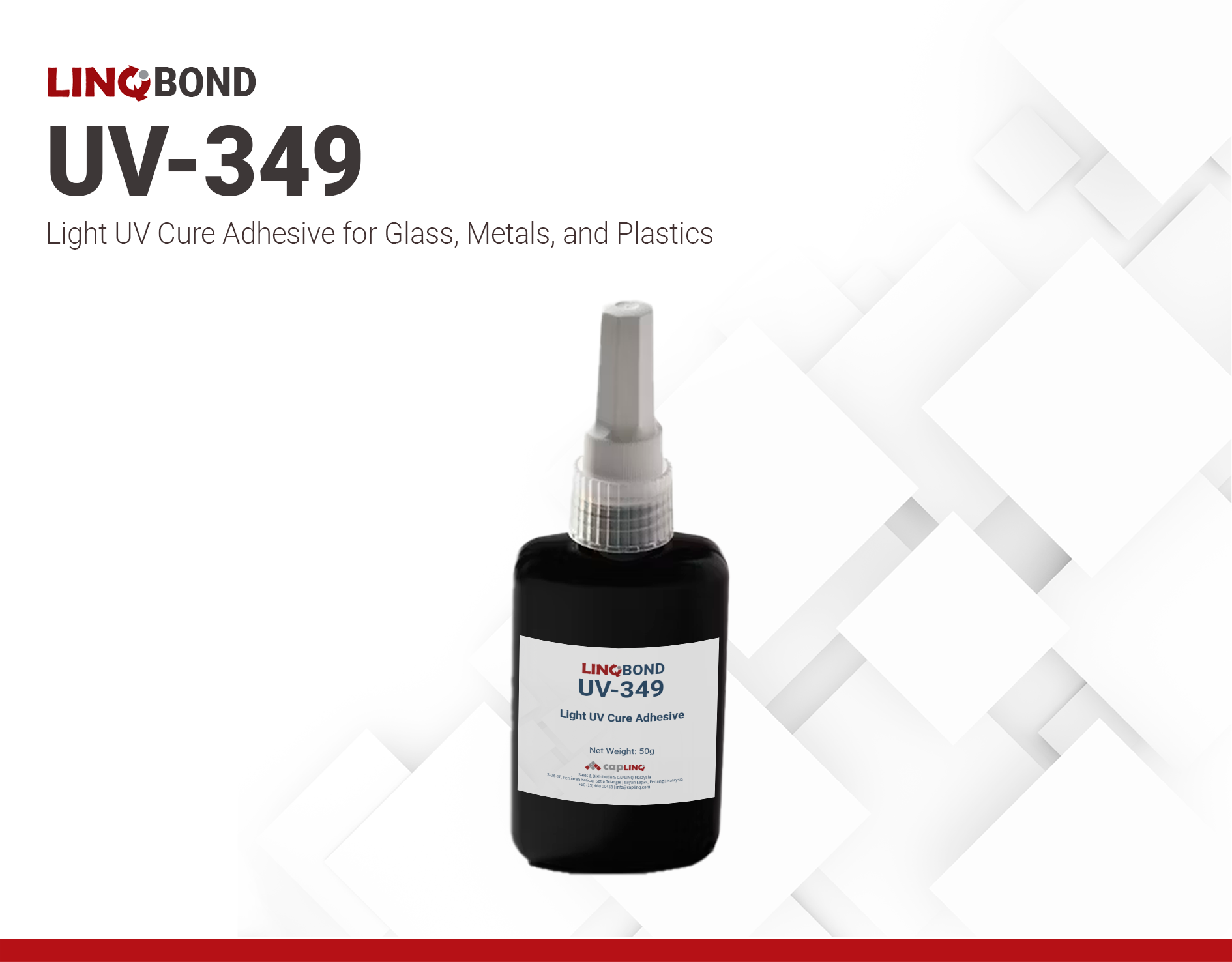UV-349 | Light UV Cure Adhesive
- Medium viscosity (4,000 - 8,000 cPs)
- Compatible with different substrates
- Flexible
Product Description
LINQBOND UV-349 is a medium-viscosity, single-component, ultraviolet (UV) curable adhesive formulated to bond across different types of substrates such as glass, various metals (e.g., aluminum, stainless steel), and polymers (e.g., polycarbonate, PMMA, PVC). UV-349 is formulated to achieve rapid photopolymerization upon exposure to UV radiation from conventional metal halide or mercury arc lamps.
LINQBOND UV-349 has significant thermomechanical stability and chemical resistance, showing high tolerance to a wide array of solvents and maintaining its inherent toughness and flexibility across an extended operational temperature range. It is also forumated to have impact resistance and sustained bond integrity when exposed to environments with fluctuating temperatures.
Product Key Features
- Flexible — effectively absorbs stress and vibration without leading to cracking or failure.
- Medium viscosity — allows adhesive to be workable and easily applied onto uneven surfaces without compromising bond strength.
- Compatible with diverse substrates — suitable for conding different types of glass, polymers, and metals.
Technical Specifications
| General Properties | |||||
| Color Color The color | Optically clear when cured | ||||
| Specific Gravity Specific Gravity Specific gravity (SG) is the ratio of the density of a substance to the density of a reference substance; equivalently, it is the ratio of the mass of a substance to the mass of a reference substance for the same given volume. For liquids, the reference substance is almost always water (1), while for gases, it is air (1.18) at room temperature. Specific gravity is unitless. | 1.05 | ||||
| Thermal Properties | |||||
| Operating Temperature | -51 - 121 °C | ||||
| Mechanical Properties | |||||
| Elongation Elongation Elongation is the process of lengthening something. It is a percentage that measures the initial, unstressed, length compared to the length of the material right before it breaks. It is commonly referred to as Ultimate Elongation or Tensile Elongation at break. | 200 % | ||||
| |||||
| |||||
| |||||
| Physical Properties | |||||
| Viscosity Viscosity Viscosity is a measurement of a fluid’s resistance to flow. Viscosity is commonly measured in centiPoise (cP). One cP is defined as the viscosity of water and all other viscosities are derived from this base. MPa is another common unit with a 1:1 conversion to cP. A product like honey would have a much higher viscosity -around 10,000 cPs- compared to water. As a result, honey would flow much slower out of a tipped glass than water would. The viscosity of a material can be decreased with an increase in temperature in order to better suit an application | 4,000 - 5,000 mPa.s | ||||
Additional Information
LINQBOND UV-349 Additional Properties
| Property | Value | Unit |
| Tack Free Time | 15-30 | s |
| Fixture Time, Glass | 3-5 | s |
| Tensile Shear (ASTM D1002, PC/PC) | 4.3 | N/mm2 |
| Tensile Shear (ASTM D1002, Acrylic/Acrylic) | 3.4 | N/mm2 |
| Chemical Resistance (Isopropyl Alcohol), 24 hours | 80 | % |
| Chemical Resistance (Boiling Water), 2 hours | 85 | % |
| Chemical Resistance (Water @50℃), 150 hours | 75 | % |



